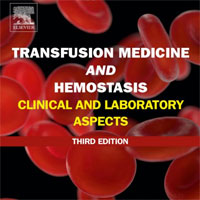Tag: anticoagulation
High Risk of Thrombosis in Patients with Severe COVID-19
Despite anticoagulation, a high number of patients with ARDS secondary to COVID-19 developed life-threatening thrombotic complications. Higher anticoagulation targets than in usual critically ill patients should therefore... read more
New NICE Guidelines on VTE Management
In the midst of everything that is going on with COVID-19 it is easy to see how important non coronavirus stuff can get overlooked. But we still need to keep our eyes open. After a 3 year process involving many meetings,... read more
COVID-19: Thrombosis and Anticoagulation
Early reports have shown that COVID-19 is most likely causing a hypercoagulable state, however the prevalence of acute VTE and exactly how to treat it is an evolving area. Limited data suggest pulmonary microvascular thrombosis... read more
Multi-Modal Characterization of the Coagulopathy Associated With ECMO
The extracorporeal membrane oxygenation(ECMO)-associated coagulopathy is a multifactorial and quickly developing syndrome. It is characterized by individual changes of coagulation parameters and platelets and is aggravated... read more
Serum Ferritin Identifies Septic Patients with Macrophage Activation-like Syndrome
A serum ferritin level above 4420 ng/ml identifies in a reliable and very specific way the septic patient with macrophage activation-like syndrome (MALS). Since the recent subgroup analysis indicated a survival benefit... read more
Epidemiology of Clinically Relevant Bleeding in Critically Ill Adolescents
Clinically Relevant Bleeding (CRB) is common in critically ill adolescents who are at high risk of venous thromboembolism (VTE). Admission after trauma or surgery can be used to stratify the risk of CRB in this population.... read more
Parenteral Anticoagulation Not Associated with Reduced Risk of Ischemic Stroke Among Patients with Atrial Fibrillation During Sepsis
Among patients with Atrial Fibrillation (AF) during sepsis, parenteral anticoagulation was not associated with reduced risk of ischemic stroke and was associated with higher bleeding rates. Of 113,511 patients hospitalized... read more
Transfusion Medicine and Hemostasis: Clinical and Laboratory Aspects
Transfusion Medicine and Hemostasis: Clinical and Laboratory Aspects, Third Edition, is the only pocket-sized, quick reference for pathology and transfusion medicine residents and fellows. It covers all topics in transfusion... read more

Reversal of Oral Anticoagulation in Patients with Acute Intracerebral Hemorrhage
In light of an aging population with increased cardiovascular comorbidity, the use of oral anticoagulation (OAC) is steadily expanding. A variety of pharmacological alternatives to vitamin K antagonists (VKA) have emerged... read more
Complications of Regional Citrate Anticoagulation: Accumulation or Overload?
Based on recent recommendations, the use of Regional Citrate Anticoagulation (RCA) is likely to increase dramatically throughout the world. RCA protocols should aim to minimize the amount of net citrate load delivered to... read more
Catheter Directed Thrombolysis for Intermediate Risk Pulmonary Embolism
Intermediate risk pulmonary embolism is common and carries a risk of progression to hemodynamic collapse and death. Catheter directed thrombolysis is an increasingly utilized treatment option, based largely on the assumptions... read more
Thromboelastography-based Anticoagulation Management During ECMO
Thromboelastography (TEG) seems to be safely used to guide anticoagulation management during ECMO. Its use was associated with the administration of lower heparin doses compared to a standard of care aPTT-based protocol.... read more
Subsegmental Pulmonary Embolism: Anticoagulation or Observation?
As the use of chest CT-angiograms in emergency departments and medical wards has risen by more than tenfold, so has the discovery of small pulmonary emboli of unclear clinical significance. These PEs are often isolated to... read more
Association of Inferior Vena Cava Filter Placement for Venous Thromboembolic Disease and a Contraindication to Anticoagulation With 30-Day Mortality
After adjustment for immortal time bias, Inferior Vena Cava (IVC) filter placement was associated with increased 30-day mortality in patients with venous thromboembolic disease (VTE) and a contraindication to anticoagulation.... read more
The Speed of Sound: A New Measure to Single Out High-Risk PE Patients
Predicting which pulmonary embolism patients will do well with oral anticoagulation and which will decompensate is a bit murky, at best. The treatment of pulmonary embolism (PE) has evolved quite a bit in just the past few... read more
Rivaroxaban Lowers Cardiovascular Risk But Increases Bleeding Risk
In 27,395 patients with stable atherosclerotic disease, the addition of 2.5 mg rivaroxaban twice daily to aspirin therapy reduced the rates of cardiovascular death, stroke, or nonfatal MI, at the cost of increased major bleeding... read more
A multifaceted intervention to improve treatment with oral anticoagulants in atrial fibrillation
Oral anticoagulation is underused in patients with atrial fibrillation. We assessed the impact of a multifaceted educational intervention, versus usual care, on oral anticoagulant use in patients with atrial fibrillation.... read more
Transcatheter Aortic Valve Replacement in Younger Individuals
When a patient has an aortic valve that requires replacement because the native valve is diseased, 2 types of valves can be used - mechanical valves or bioprosthetic valves, also known as tissue valves. Bioprosthetic valves... read more
Bleeding Management and Reversal Strategies for the DOAC Patient: New and Future Approaches
Todd Fraser, MD, speaks with Scott Kaatz, DO, FACP, SFHM, about his talk given at the 45th Critical Care Congress on, Bleeding Management and Reversal Strategies for the DOAC Patient: New and Future Approaches. Dr. Kaatz... read more
Rivaroxaban associated with increased bleeding risk compared with dabigatran in nonvalvular atrial fibrillation
There was a total of 52 240 new starts of dabigatran and 66 651 new starts of rivaroxaban during the study period. Rivaroxaban was associated with a non-significant decrease in thromboembolic stroke. There was also a non-significant... read more









